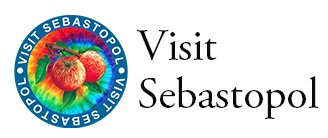History and Culture
Thanks to the Western Sonoma County Historical Society for this information
A Pomo girl by Edward Curtis
Native peoples: The traditions of our region begin with the first nation Miwok and Pomo tribes. The latter were known worldwide for their amazingly intricate basketry and appear to have had up to 11 encampments alongside the Laguna de Santa Rosa, on the eastern edge of Sebastopol.
Early 1800’s: The first wave of immigrants to arrive at the Laguna were settlers from Mexico, which was then a colony of Spain. The area was carved up into Spanish land grants, which were eventually sold off (sometimes under duress) to U.S. citizens of European descent. As the population of California swelled with the Gold Rush of 1849, Sebastopol became a town with its own post office in 1850, serving as a trading center for area farmers.
Our Russian heritage: The name Sebastopol (Seh-BASS-toh-pohl) comes from the Russian seaport of Sevastopol, which was then under siege by the British during the Crimean War. The area had strong ties to Russia due to the Russian colony at Fort Ross, which still stands today, located to the north and west of Sebastopol, on the California coast.
The Enmanji Buddhist Temple
Other immigrants: The early part of the 20th century saw many waves of immigrants from Italy, Portugal, China and Japan. In fact, Sebastopol boasts an authentic Buddhist Temple, the Enmanji Temple built in the 1930s and transplanted to our town by the local Japanese community. In the latter half of the 20th century through the present day, immigrants from Mexico and Central America, many drawn by the labor needs of the wine industry, also became a part of our community.
Downtown Sebastopol in 1881 (Western Sonoma County Historical Society Collection)
Our agricultural roots: Sebastopol has long been known for the fertility of its soil. Early crops included cherries, apples and hops. The remains of old hop drying ovens can be seen on many hillsides and orchards. By the 1940’s, apples took the lead as the primary crop, most notably the Gravenstein apple. With the growth of the wine industry in nearby Napa County, many apple orchards have been replaced by vineyards. Grapes are now the primary agricultural crop of our region, though the area around Sebastopol is also dotted with organic farms, the bounty of which you can find every Sunday at the Sebastopol Farmers Market.
Luther Burbank
Noted plant breeder Luther Burbank. In 1885, Luther Burbank purchased 18 acres in Sebastopol, which he made into his Gold Ridge Experimental Farm. Here he conducted most of his experiments with grafting and hybridized plants. Luther Burbank is most famous for his development of the Santa Rosa plum and the Shasta Daisy, but he also developed the Russet potato, which is still the most common potato in the American diet. Three acres of his farm are still intact, with the cottage and outbuildings fully restored. Visitors are welcome at the farm and can walk through self-guided trails that lead to 200 of his original plantings. Find out more about the Experiment Farm and the West County Museum here.
The impact of the railroad: In the early 1900’s, the train was significant part of our development as an agricultural center. Although the trains no longer run, the depot and support buildings have been restored and converted into offices, a museum and a lively tavern. The old railway routes have been paved over to become bike and walking trails that stretch from Santa Rosa to Forestville.




